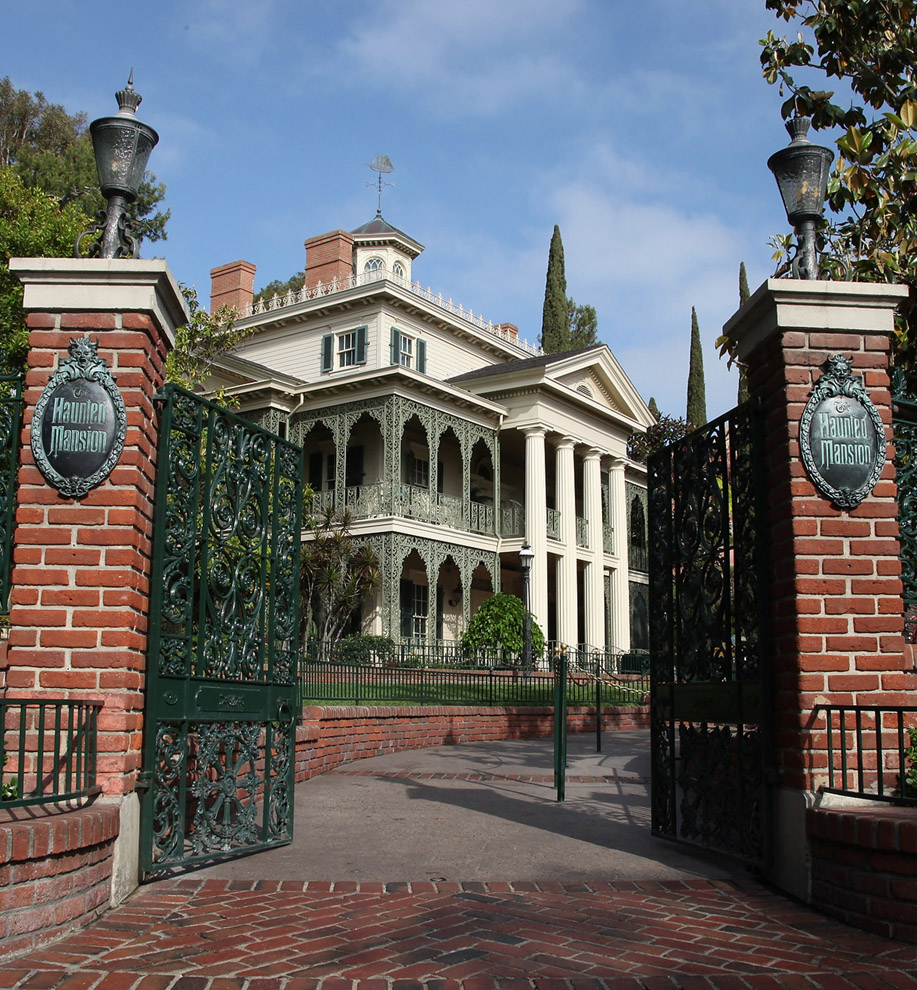…Or, How Disney Imagineers Learned How to Stop Worrying and Love Decrepit Façades

image source: DisneyWorld.com
When it opened in 1994, it was lauded as one of the greatest achievements in Imagineering; the most technologically complex ride system in over a decade, with the most immersive and believable decor, and an experience unlike any other theme park ride. Everything about The Twilight Zone Tower of Terror was the pinnacle of a Disney E-Ticket attraction. Set at the far end of a new area of the Disney-MGM Studios Theme Park called Sunset Boulevard, the 199-foot Tower loomed ominously over the front of the park, its screams echoing across the entire length of the street, spilling into the main entrance and hub, beckoning curious thrill-seekers.

Approaching the Hollywood Tower Hotel from the crossroads of Hollywood and Sunset (an intersection that does not exist in the real world Los Angeles), reveals it to be in a state of decay. Most obvious are the two missing sections where the guest elevator shafts once were. A few of the letters on its sign hang off-kilter, and at night, the old neon tubes flicker and blink erratically, as if begging for attention from a custodian who is long gone. The stucco is cracked and missing in places, revealing patches of the brick and mortar framework.
A walk through the front gate reveals an unkempt and overgrown garden, while planters lay broken and empty in the outer conservatory, overtaken by their herbal residents. Entering the lobby, everything appears to have been hastily abandoned some time ago. A thick layer of dust covers every surface and item, while cobwebs, deserted by their makers long ago, string together decorative tchotchkes and the furniture they inhabit. A newspaper from October 31, 1939 is laying on the arm of a couch. A game of mahjong is left unfinished, as are the meals and glasses of wine from a dining couple. The reception desk is littered with the belongings of several guests who will never return to claim them. Straight ahead are the oversized doors of a pair of elevators, blocked by a sign, clearly suggesting that they are out of service.

Adjacent to the lobby are two libraries, each filled to the brim with dusty books, busts, and curiosities; and a very old cathode-ray tube television, which flashes to life with a bolt of lightning and displays the opening sequence of an episode of The Twilight Zone in which Rod Serling introduces us, the guests, to the fates of the hotel’s previous visitors, now lost in the Fifth Dimension along with their bellhop, an elevator, and the missing wings of the tower. For that reason, we are then directed through the boiler room to a series of maintenance service elevators — still in operation, waiting to take us, willingly or not, to The Twilight Zone.
If this description was evocative, try to recall the feeling you had the first time you visited the Tower and boarded that mysterious elevator, and took your first plunge into the deepest, darkest corner of your imagination. It was, and still is, an amazing and engaging experience. It really did successfully give the impression of checking into a deserted hotel on the dark side of Hollywood. Why then, you may ask, do I consider it the worst themed attraction?
Let us begin at the beginning…

image source: Disney Parks Blog
The Tower of Terror is, of course, not the Imagineers’ first haunted attraction. In the early ’60s, Walt himself began work on a long-awaited attraction for Disneyland, to be known as The Haunted Mansion. Years before the ride itself was installed, a façade was planned, designed, and built on the outskirts of a new land, New Orleans Square: a stately southern plantation home with influences from antebellum and French Quarter architecture. From the guests’ view, there was nothing haunted or even empty about the beautiful white house with its decadent pillars and wrought iron railings. Walt’s philosophy was that to have a dilapidated building in the middle of his meticulously-kept park would create an eyesore. As he so famously put it, “We’ll take care of the outside, and let the ghosts take care of the inside.”

image source: TokyoDisneyResort.jp
And so that ideology remained. A few years later, when the Imagineers were designing a new façade for Florida’s colonial-themed Mansion. Though a more intimidating architecture was chosen, its exterior structure and grounds remained impeccably presented, as if one were standing at the home of a well-to-do Hudson Valley family in Washington’s fledgling United States. This creepy, castle-like motif would translate perfectly to Tokyo Disneyland’s Fantasyland, where their Mansion resides.

image source: Inside the Magic
Two more decades would pass before a new generation of Imagineers, under the guidance of company president Michael Eisner, designed a new haunted attraction for Euro Disney’s flagship kingdom park: a Haunted Mansion spinoff known as Phantom Manor. The façade of this attraction would be noticeably aged and decayed. The reason given for the Manor’s ramshackle appearance was that it would quickly communicate to an international and multilingual audience that this is a ghost house, and to expect supernatural effects and scares inside. So while the rest of Thunder Mesa — the in-universe name of Disneyland Paris’ Frontierland — looked like it had just sprung up from the dirt of the American Old West during the height of the Gold Rush, the former home of the late Henry Ravenswood appeared, oddly, long-abandoned.
Which brings us back across the Atlantic to Central Florida, where a recreation of a late-1930s/early-1940s Hollywood that never was, and always will be, has recently captured the imaginations of millions of visitors. A walk down Hollywood Blvd., with its Art Deco architecture, garish pastels, hypnotizing neon lights, and Grauman’s Chinese Theater in the distance, pulls guests back to a time and place that has been idolized for generations. Side streets Vine and Sunset continue this trend, with a doppelgänger of the famous Carthay Circle Theater and an old-fashioned farmers market occupying the space at the end of the latter, overseen by Sauron’s Eye of the Studios… the strangely decrepit shell of the Hollywood Tower Hotel.

Now I can excuse the blanket of dust and the scattering of knickknacks in the vacant hotel lobby, but the jungle of vegetation and the broken-down condition of the exterior depict a building that been neglected for decades. If we’re meant to believe that the boulevards of Hollywood and Sunset are as they appeared circa 1940, why would a facility that ceased operation in November of 1939 be in such an advanced state of disrepair? In Tokyo DisneySea, the Tower of Terror (minus the Twilight Zone theme) is styled like a turn-of-the-20th-century New York Gothic high rise which, much in the same vein as Florida’s and Tokyo’s Haunted Mansions, manages to look imposing without appearing deteriorated.
It’s the type of Imagineering faux pas that the late Eisner-era Disney company was notorious for, right up there with the visible show building on the backside of Expedition Everest; and unfortunately, it’s never been repaired or even addressed. It’s the type of thing that most people don’t even think about, which is why it will probably never be fixed.
To make matters exponentially worse, literally right next-door to the prematurely dilapidated Tower and in plain view of the period Sunset Ranch Market is G-Force Records, a warehouse-looking building with a retro-modern styled façade and archway, sporting a giant Stratocaster, a late-1960’s “super-stretch” limousine, and a BGM loop consisting exclusively of hard rock music from the ’70s, ’80s, and ’90s. With such an egregiously anachronistic neighbor a stone’s throw away, even if they did completely redesign the Tower’s façade to look new again, they’d have to completely cover or relocate the Rock ‘n’ Roller Coaster to restore any semblance of consistency with the 1940s theming.

In the Imagineers’ defense, the Tower of Terror, in and of itself, is an amazing attraction, both in its design and execution; but when you consider it a part of the whole experience that is a land within a Disney Park, its crumbling ruins stick out like a sore thumb compared to the pristine surroundings of new old Hollywood.


